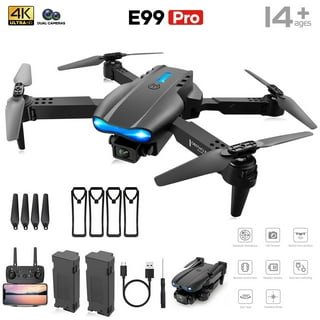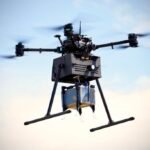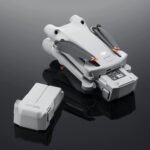Introduction
Importance of Drones
Drones have taken the world by storm, transforming industries and enhancing our daily lives. They’re not just fancy toys for hobbyists; drones now play a vital role in a multitude of applications, ranging from agriculture to emergency services. In fact, it’s hard to overlook the increasing reliance on these versatile machines. Let’s dive a bit deeper into why drones are so significant today.
- Agricultural Advancements: Farmers are using drones to monitor crop health, optimize resources, and automate tasks. With aerial imagery and data collection, they can make informed decisions, ensuring yield improvement.
- Emergency Response: First responders often utilize drones for search and rescue operations. Their capability to access hard-to-reach areas can mean the difference between life and death in critical situations.
- Delivery Services: Companies like Amazon are experimenting with drone delivery systems to enhance shipping efficiency. Imagine receiving your online orders at the speed of a drone!
- Photography and Filmmaking: Drones have revolutionized the way we capture videos and photos. From breathtaking landscapes to dynamic sporting events, capturing high-definition aerial footage has never been more accessible.
- Infrastructure Inspection: Industries are using drones for inspecting bridges, power lines, and buildings, thus saving time and minimizing risks associated with manual inspections.
Overall, the utility of drones continues to expand, and their integration into various sectors is crucial for modernization and increased efficiency.
Walmart as a Drone Retailer
In this rapidly evolving market, Walmart has emerged as a key player and a go-to destination for drones. It’s not just about groceries anymore; this retail giant is recognizing the growing enthusiasm for drones and the diverse range of customers they draw. When you think about Walmart, you might picture aisles of groceries, clothing, and electronics. However, flip through the electronics section, and you’ll find an impressive lineup of drones catering to all types of users—from beginners to seasoned enthusiasts. Here’s why Walmart stands out as a drone retailer:
- Competitive Pricing: Walmart is known for its low prices, making drones more accessible for everyone. You can often find great deals on popular brands.
- Variety of Options: Their inventory includes everything from basic beginner drones to advanced models with high-end features. Whether you’re looking for a fun gadget or a professional tool, you’re likely to find it here.
- In-Store and Online Shopping: You can choose to explore models in-store, where you can get a feel for them, or shop online to have them delivered directly to your doorstep.
- Expert Assistance: Store associates are often knowledgeable and can offer insights into which drone might be best suited for your needs. If you have questions, they’re there to help!
- Accessories Galore: Walmart also caters to drone accessories, ensuring that you have everything you need to make the most of your flying experience.
Take my friend Jane, for example. She always dreamed of capturing aerial shots of picturesque landscapes on her hiking trips. One weekend, she decided to visit Walmart to explore her options. After browsing the aisles, she found a mid-range drone that was perfect for her needs—compact, easy to operate, and came with a few accessories. Not only did she snag it at a fantastic price, but the added peace of mind from the warranty offered by Walmart sealed the deal! So whether you’re an aspiring photographer like Jane or just curious about flying, Walmart provides an excellent entry point into the world of drones. By offering competitive pricing, an extensive selection, and knowledgeable staff, Walmart truly makes drone shopping easy and accessible for everyone. As we dive deeper into the world of drones, it’s time to explore the various types available and the features you should consider before making your purchase. Let’s take your drone journey to the next level!
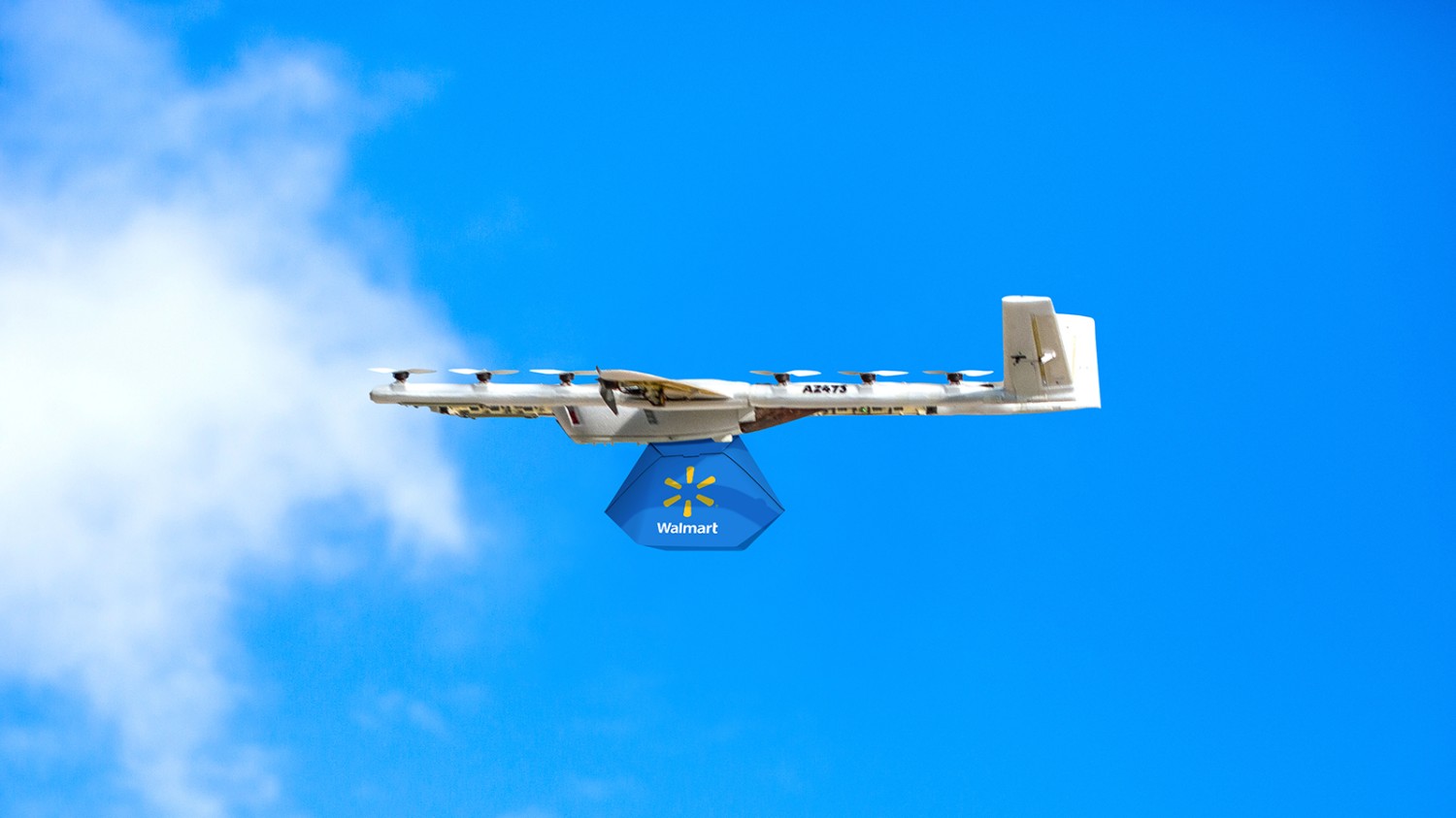
Understanding Drones
Types of Drones
As you embark on your journey into the world of drones, it’s essential to understand the different types available. Each type serves unique purposes and caters to various skill levels. Let’s break down the major categories of drones:
- Consumer Drones: These are probably the most recognizable types of drones. Designed for hobbyists and amateur photographers, consumer drones are user-friendly and often come equipped with HD cameras. A great example is the DJI Mini series. They’re perfect for those Saturday hikes or outdoor gatherings, allowing you to capture magical moments from above.
- Racing Drones: If speed and agility excite you, racing drones could be your calling! Built for fast-paced maneuvers and designed with lightweight materials, these drones often have enhanced FPV (first-person view) capabilities. Enthusiasts often participate in thrilling competitions, racing against others through challenging courses.
- Commercial Drones: Used in industries like agriculture, real estate, and construction, commercial drones are equipped with advanced technology for inspecting, surveying, and mapping. For instance, surveyors may use them to create 3D maps of land, helping clients visualize their projects.
- Professional Drones: These high-end devices are tailored for serious photography and cinematography. Professional drones offer superior camera quality, advanced stabilization systems, and longer flight times. Filmmakers often rely on models like the DJI Phantom 4 Pro to capture stunning, cinematic shots.
- Military Drones: While these are not typically available for consumers, military drones are used for reconnaissance and surveillance. They can gather intelligence and perform missions beyond human reach or capability.
- Toy Drones: For kids or those just starting, toy drones are affordable and simple to operate. These lightweight models can be used indoors and are perfect for learning the basic skills of flying without significant investment.
Understanding the type of drone that best suits your needs is crucial in ensuring you have the right flying experience.
Key Features to Consider
Now that you know the different types of drones, let’s dive into the key features you should consider when making a purchase. Here are some vital aspects:
- Camera Quality: For those interested in photography, camera quality is paramount. Look for specifications like megapixels, video resolution (1080p, 4K), and camera stabilization features.
- Flight Time: The battery life of a drone determines how long it can fly without recharging. Most consumer drones offer anywhere from 20 to 30 minutes of flight, so consider your intended use. Longer flight times are better for photography and mapping.
- Range: This refers to how far you can fly your drone from the controller. For casual users, a range of about 1000 to 2000 meters is generally sufficient. However, if you’re looking to film from long distances, opt for a drone with a larger range.
- Ease of Use: Beginners will want a drone that’s easy to operate with intuitive controls. Drone manufacturers often include features like one-key takeoff/landing, GPS, and “return home” functions to enhance the user-friendliness.
- Durability: Consider the construction material of the drone, especially if you’re new and might crash frequently. Drones made from strong plastics or carbon fiber are sturdier and can withstand a few bumps and falls.
- Smart Features: Many modern drones come with smart tech like obstacle avoidance, follow-me modes, and customizable flight paths. These features can enhance your flying experience and allow for creative shots.
- Price: Lastly, consider your budget. Drones can range from under $100 for basic toy models to several thousand dollars for professional-grade machines. Establishing what you need versus what you can afford will guide your decision.
During my first drone adventure, I overlooked several of these features and purchased a model that didn’t have a great camera. Although it was fun to fly, I was disappointed that it couldn’t capture the stunning views of my vacation to the mountains! Take it from me: do your research to ensure your drone fits your needs, saving you from any unexpected surprises. With this insight into types and features, you’re now well-equipped to explore the options available at retailers like Walmart. Next up, let’s dive into how to shop for drones effectively and budget wisely!
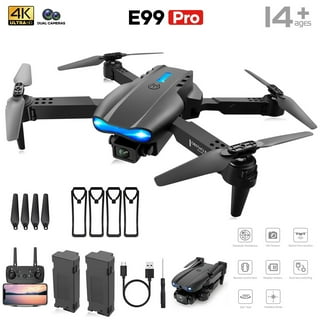
Shopping for Drones at Walmart
Aisles to Explore
Now that you’re armed with knowledge about the types of drones and the key features to look out for, it’s time to hit the aisles of Walmart! As you wander through the expansive store, you’ll want to keep your eyes peeled for specific sections that will make your shopping experience enjoyable and productive.
- Electronics Section: The first stop is the electronics aisle, where you’ll find the majority of drone options. Here, you’ll see a variety of consumer and racing drones. Look for well-known brands like DJI, Holy Stone, and Parrot. Each model will often have a specification chart on the box, making it easier to compare features.
- Toys & Hobbies: Don’t overlook the toys section, where you might find smaller, more affordable toy drones. These can be ideal if you are just starting out or looking for a fun gadget for kids. They often come with built-in cameras and basic controls, providing an excellent entry point into the world of drones.
- Outdoor Equipment: Walmart’s outdoor aisle may surprise you! Sometimes, you can find drone accessories like backpacks, carry cases, and replacement batteries right next to camping gear. Being well-prepared can make a big difference in your drone experience, especially on outdoor excursions.
- Photography Equipment: If you’re into photography, check this aisle for additional accessories such as camera filters or gimbals. These can further enhance your drone’s performance, allowing you to capture stunning images and videos easily.
- Online Store: Don’t forget the convenience of shopping online at Walmart.com! You can browse a more extensive selection, read customer reviews, and compare prices without setting foot in the store. Plus, delivery options often make it seamless to get your new drone delivered right to your door.
When I was shopping for my first drone, I remember taking my time to explore different aisles. I stumbled upon a fantastic carrying case designed specifically for drones, which I’ve found incredibly useful since it keeps everything organized and protected.
Pricing and Budgeting Tips
Drones come in a wide range of prices, so setting a budget before you start shopping is key. Here are some tips to help you navigate Walmart’s pricing landscape like a pro:
- Set a Realistic Budget: Consider what features you genuinely need and what you’re willing to invest. As a beginner, you might not need a high-end professional drone that costs over $1,000. A budget of $300 to $500 can get you a solid model, with good camera quality and flight time.
- Check for Discounts: Walmart frequently runs promotions and discounts, especially during holiday seasons. Keep an eye on upcoming sales events or Black Friday deals to snag your desired drone at a lower price.
- Consider Refurbished Models: Walmart often stocks refurbished drones that have been tested and certified to work like new but at a significantly lower price. If you find a reputable model, this could be a smart way to stretch your budget.
- Accessories Included: When comparing prices, look for bundles that include essential accessories like extra batteries, memory cards, or carrying cases. This can save you money in the long run compared to buying those items separately.
- Loyalty Programs and Credit Card Offers: If you frequently shop at Walmart, consider enrolling in the Walmart Rewards program or using a Walmart credit card. You can earn cashback or points with your purchases, which can later be applied to future shopping.
- Read Customer Reviews: Before finalizing your purchase, sift through customer reviews both on the Walmart website and social media. These insights can help you gauge whether a model is worth its price tag.
While shopping for my drone, I noticed a brand-new model I was interested in cost around $450. However, I noticed a refurbished version listed online for $350 with great reviews. Checking on return policies helped ease my hesitation, and I ended up making the purchase! With the aisles explored and budgeting tips in mind, you’re all set to take the plunge into drone ownership. Up next, we’ll dive into comparing drone models, looking at top brands available at Walmart, and what performance specs will matter most for your needs!

Comparing Drone Models
Top Brands at Walmart
As you navigate through your options, it’s essential to familiarize yourself with some of the top drone brands available at Walmart. Each brand offers unique features and innovations designed to cater to different flying needs and preferences. Here are some standout brands to keep in mind:
- DJI: Renowned for their cutting-edge technology, DJI is a household name in the drone world. Their models range from beginner-friendly drones to professional-grade systems. The DJI Mini series, for example, is perfect for travelers, offering portability without compromising on camera performance. Plus, Walmart often stocks the popular DJI Mavic line, known for superior camera capabilities and flight stability.
- Holy Stone: If you’re looking for budget-friendly options without skimping on features, Holy Stone delivers. Their drones are highly rated for beginners and offer excellent customer support. The Holy Stone HS720, for instance, is equipped with a 4K camera and GPS capabilities, a steal for its price point.
- Parrot: Parrot isn’t just making waves with their Bebop series of consumer drones, but they also have specialized models for unique uses, like the Parrot Anafi, known for its compact size and impressive camera features. You might find these at a decent price at Walmart, making them a great option for aerial photography enthusiasts.
- Yuneec: Known for their Typhoon series, Yuneec drones combine sophisticated technology with user-friendly designs. The Yuneec Breeze is particularly enjoyable for beginners, offering automatic flight modes that make capturing images simple.
- Altair Aerial: While not as mainstream as the others, Altair Aerial provides excellent value for beginners. Models like the Altair 818 capture decent video quality and are typically easy to fly. They often also come with a protective frame, which is a bonus for new pilots.
I remember my excitement when I finally decided on a Holy Stone drone after comparing various brands. The customer feedback showcased an enthusiastic community that provided great tutorials and tips. This made my initial flying experience much smoother!
Performance and Specifications
Understanding the performance specs is key to making the best choice. Here’s a breakdown of important factors to consider when comparing drone models:
- Camera Specs:
- Resolution: Look for drones with at least 1080p resolution, although 4K is becoming more common. Drones like the DJI Mavic Air 2 offer stunning 4K video quality.
- Gimbal Stabilization: This feature prevents shakiness while filming. Drones with 3-axis gimbals provide smoother shots, essential for professional filming.
- Flight Time:
- Battery life is crucial. Most consumer drones average around 20 to 30 minutes of flight per charge. The DJI Mini 2, for instance, proudly boasts a 31-minute flight time, making it ideal for longer shooting sessions.
- Range:
- The control range varies, with beginner drones typically having a range of about 150 meters, while advanced models can exceed 7 kilometers. Always consider how far you wish to fly your drone away from you.
- Weight:
- Heavier drones may have sturdiness and stability but can be harder to carry. Conversely, lightweight drones are generally more portable but might not withstand wind as well. Finding a balance that meets your needs is vital.
- Speed:
- Not every drone is designed for speed, but for racing drones, look for models capable of speeds exceeding 40 mph. If you enjoy racing or acrobatics, this feature will be paramount.
- Smart Features:
- Modern drones equipped with intelligent flight modes, obstacle avoidance, and follow-me capabilities provide a richer flying experience. For example, the DJI Mavic Air 2 includes features that make tracking subjects while avoiding obstacles a breeze.
While being flexible with your specifications is beneficial, defining what aspects matter most to you will help narrow your search. During my drone selection, I spent time reading reviews on performance specs before deciding on a model that not only had excellent camera quality but also great flight time. Remember, it’s always best to align the drone’s capabilities with your intended use! With this knowledge in hand, you’ll be well-equipped to make an informed choice when it comes to selecting the perfect drone for your needs. Next, we’ll explore the must-have accessories and add-ons that can elevate your flying experience further!

Accessories and Add-Ons
Must-Have Accessories
While picking the right drone is crucial, investing in the right accessories can significantly enhance your flying experience. Whether you’re a novice flyer or a seasoned hobbyist, there are several must-have accessories that can elevate your drone adventures. Here are some essentials to consider:
- Extra Batteries: One of the most critical accessories for any drone pilot is extra batteries. Considering most drones offer around 20 to 30 minutes of flight time, having spare batteries can extend your flying sessions. Brands like DJI even sell battery packs that allow you to charge multiple batteries simultaneously.
- Carrying Cases: Investing in a sturdy carrying case is essential to protect your drone and accessories while traveling. Look for padded cases with custom compartments for your specific drone model. I once faced a heartbreaking situation where I damaged my drone due to a lack of protection during a road trip. A good case can prevent that meltdown!
- Propeller Guards: These are especially important for beginners. Propeller guards can protect both your drone and bystanders from unintentional accidents during flight. They provide a buffer for the propellers and help lessen the chance of damage during crash landings.
- Landing Gear Extensions: These extensions add height to your drone, reducing the risk of damage during takeoffs and landings, particularly on uneven ground. They can be especially useful if you’re flying in areas with tall grass or rocky terrain.
- Memory Cards: High-quality drones often demand large storage capacities for photos and videos. Investing in a reliable memory card with high read/write speeds ensures that your recordings won’t buffer or lose quality. A 64GB or 128GB SD card is often a good choice, allowing you to shoot for longer durations without worry.
- Screen Filters: If you plan to shoot outdoors often, consider screen filters for your camera. Polarizing filters can help reduce glare and enhance colors in your photos and videos, producing better results in bright conditions.
Enhancing Your Drone Experience
Now that you’ve got the basic accessories sorted, let’s explore additional add-ons that can enhance your overall drone experience:
- FPV Goggles: First-person view (FPV) goggles provide an immersive flying experience, allowing you to see from the drone’s perspective. This can be particularly thrilling when racing or scouting beautiful landscapes. Several models are compatible with DJI drones, offering a seamless flying experience.
- ND Filters: Neutral density filters reduce the amount of light that enters the camera. They’re great for drone photography, especially when shooting during bright sunny days, producing that cinematic look by allowing longer shutter speeds without overexposing your shots.
- Drone Software: Many advanced users utilize drone flight planning apps and software that can help optimize flight paths and create stunning aerial shots. Some applications even provide real-time mapping features to enhance your photography and surveying capabilities.
- Car Charger: For those long outdoor trips, consider a car charger that lets you recharge your drone batteries while you’re on the road. This means no more worrying about finding a power source during your adventures!
- Training Simulators: If you’re worried about crashing during your learning phase, training simulators can help you practice without risking your actual drone. They provide realistic flying experiences and can even help you hone your skills before taking to the skies.
- Additional Controllers: For those serious about racing, additional controllers can boost compatibility with different racing drones. Ensure that any extra controllers you consider are adaptable and user-friendly.
I can’t emphasize enough how much a good pair of FPV goggles transformed my flying experience. It felt like I was really soaring through the skies, making my piloting adventures all the more exciting! With the right accessories on hand, you can take your drone flying experience to another level, enhancing both safety and enjoyment. As you prepare for your next flight, remember to equip yourself with the tools that will help you make the most out of your time in the air! Up next, we’ll delve into important safety guidelines and regulations, ensuring you have a smooth and compliant flying experience.

Safety and Regulations
FAA Guidelines
As exciting as flying a drone can be, it’s crucial to prioritize safety and comply with regulations. The Federal Aviation Administration (FAA) has established guidelines that all drone operators must follow to ensure safety in the skies. Here’s a rundown of the key FAA regulations you should be aware of:
- Register Your Drone: If your drone weighs more than 0.55 pounds (250 grams), you must register it with the FAA. Registration costs only $5 and lasts for three years. This step ensures accountability and provides a way to trace incidents back to the operator.
- Fly Below 400 Feet: To avoid interfering with manned aircraft, you should keep your drone below 400 feet. This altitude is typically the threshold for most drone operations, keeping you within a safe flying zone.
- Maintain Visual Line of Sight: Always keep your drone within visual sight while flying. This means you should be able to see your drone with your naked eye at all times. Using FPV goggles can be thrilling, but ensure there’s someone present who can act as a spotter if you go that route.
- Avoid Flying Near Airports: Steer clear of restricted airspaces, especially around airports and heliports. The FAA has designated no-fly zones, which you can check using various apps. Always remain cautious about where you’re flying to avoid unauthorized airspace.
- Respect Privacy: Many states have laws regarding drone operation, particularly concerning privacy. Make sure not to invade others’ privacy or capture images or videos without consent. It’s always best to be considerate and respectful of people and their properties.
- Be Aware of Weather Conditions: Always check the weather before flying. Strong winds, rain, or thunderstorms can affect your drone’s performance. This was a lesson I learned the hard way; I braved the skies during a windy day and ended up losing control, thankfully without any damage!
Following these guidelines will not only ensure your safety and that of those around you but also help you avoid hefty fines and penalties. It’s all about enjoying the thrill of flying while being mindful of the rules.
Insurance and Warranties
As with any technology investment, considering insurance and warranties for your drone can provide peace of mind. Drones can be costly, and accidents can happen, so having a plan in place is crucial.
- Drone Insurance:
- Liability Insurance: This covers damages to third parties or property in the event of an accident. If you’re planning on using your drone for commercial purposes, this is often a requirement. Several companies offer liability insurance tailored specifically for drone operators.
- Comprehensive Coverage: This often covers accidents that occur to your drone during use, including theft or damage. Like car insurance, policies may vary in what they cover. Be sure to read the fine print!
- Manufacturer Warranties: When purchasing a drone, always check the warranty provided by the manufacturer. Most brands offer warranties that cover defects in materials or workmanship for a certain period. Here’s what to look for:
- Duration: Most warranties last from 6 months to 2 years, depending on the brand.
- What’s Covered: Understand what is covered under the warranty. Accidental damage is often not included, so consider additional insurance for that aspect.
- Extended Warranties: Some retailers, including Walmart, offer extended warranties at the time of purchase. These can be beneficial if you’re worried about future damage or malfunctions beyond the standard warranty period.
I once had an issue with the camera on my drone after a few months of use. Thankfully, the warranty covered the repairs, and I didn’t have to stress about the cost. It’s a relief to know that you can rely on support if an unexpected mishap occurs! By adhering to FAA guidelines and considering insurance options, you’ll create a responsible and enjoyable flying experience. So, strap into your controller, keep the safety tips in mind, and prepare for many flying adventures ahead! Next, we’ll dive into what comes after the purchase—maintenance tips and ways to join the thriving drone community!
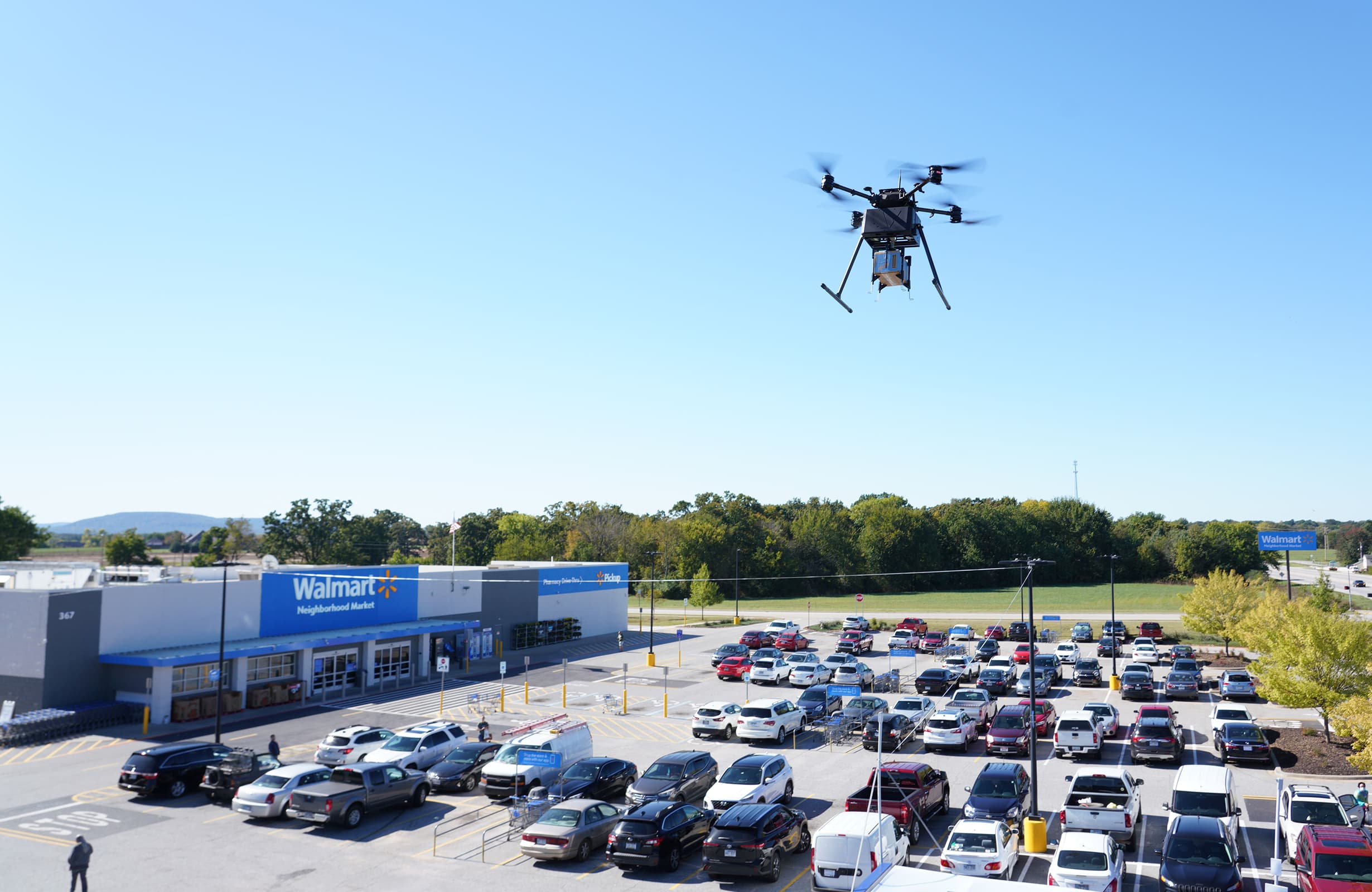
Beyond the Purchase
Maintenance and Care Tips
So, you’ve made the purchase and are ready to take to the skies. But the journey doesn’t end with just buying your drone; proper maintenance and care can significantly prolong its life and enhance performance. Here are some essential maintenance tips to keep in mind:
- Regular Inspections: Before each flight, conduct a thorough inspection of your drone. Check:
- Propellers: Look for any cracks or chips. Damaged propellers can affect flight stability and safety.
- Battery Condition: Check for swelling or leakage. If you notice anything unusual, it’s best to replace the battery.
- Camera and Gimbal: Ensure both are clean and functional, as dirt or damage can affect your aerial shots.
- Clean After Every Flight: Keeping your drone clean can prevent dirt build-up that affects performance. Use a microfiber cloth to wipe down the body, camera lens, and propellers.
- Avoid Moisture: After flying in damp conditions, ensure the drone is carefully dried, especially around sensitive electronics. It’s a crucial lesson I learned after my drone malfunctioned due to moisture!
- Software Updates: Manufacturers often release firmware updates to enhance performance and ensure safety features are at their best. Regularly check for updates through your drone’s app or on the manufacturer’s website. These updates often fix bugs and unlock new features, which can be invaluable for an enthusiast.
- Battery Management: Properly manage your batteries to maximize their lifespan:
- Charge Correctly: Always use the manufacturer’s charger. Overcharging or using the wrong charger can damage the battery.
- Store Carefully: If you’re not flying for a while, store your batteries at around 50% charge in a cool, dry place. This practice can significantly prolong their lifespan.
- Regular Calibration: Calibrating your drone ensures it functions well and flies accurately. This is particularly essential after any crash, significant bump, or when flying in a new location. Most manufacturers provide an easy calibration process via the drone’s companion app.
- Log Your Flights: Keeping a flight log can help you track your drone’s usage, battery cycles, and any issues that crop up. Not only does this provide insights into maintenance needs, but it also can enhance your flying skills over time.
These small but vital maintenance routines can save you from costly repairs and ensure that your flying experience is as enjoyable as possible.
Joining Drone Communities
Once you feel confident piloting your drone, don’t forget about the benefits of connecting with fellow enthusiasts! Joining drone communities can enrich your experience and widen your knowledge base. Here’s how to dive into the vibrant world of drone enthusiasts:
- Local Club Events: Search for local drone clubs or meetups in your area. These clubs often host events, competitions, and training days where you can learn from experienced pilots. You’d be amazed at how much you can learn just by watching others fly!
- Online Forums: Platforms like Reddit or specialized drone forums are fantastic for gathering tips, troubleshooting, and sharing experiences. Subreddits like r/drones, for example, are lively communities where members share advice and showcase their work.
- Social Media Groups: Facebook and Instagram host numerous groups dedicated to specific drone models or general drone flying. These groups can be a goldmine for information, from local meetup opportunities to photography tips.
- YouTube Channels: Following experienced drone pilots on YouTube can be highly beneficial. Many content creators produce tutorials, drone reviews, and tips on how to capture amazing aerial shots. Just be sure to check out their flying techniques and get inspired!
- Educational Workshops: Look for workshops offered by professionals in drone photography or racing. This knowledge can not only enhance your skills but also help you network with others who share your passion.
I remember my first meet-up at a local drone club, where I met so many passionate individuals eager to share their tips and tricks. I left with not just new skills but several friendships that have lasted to this day. In the growing sphere of drone enthusiasts, maintaining your equipment, connecting with others, and sharing experiences makes for a fulfilling journey. So, as you soar into the skies, remember that the adventure goes beyond the purchase—embracing maintenance and community will keep your passion alive and flourishing!
